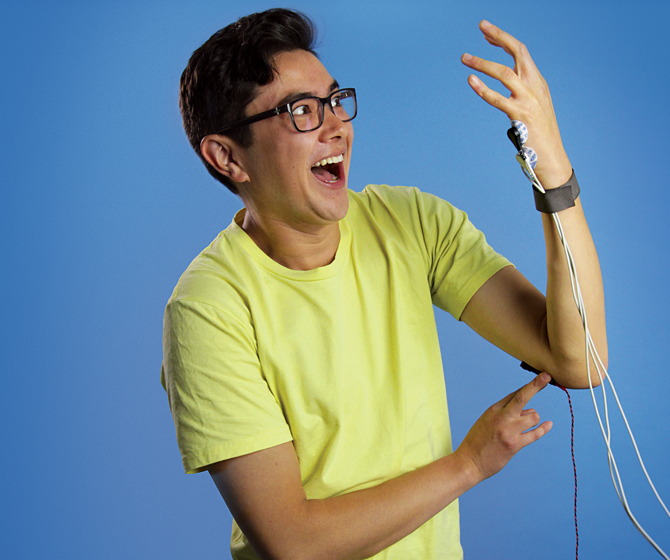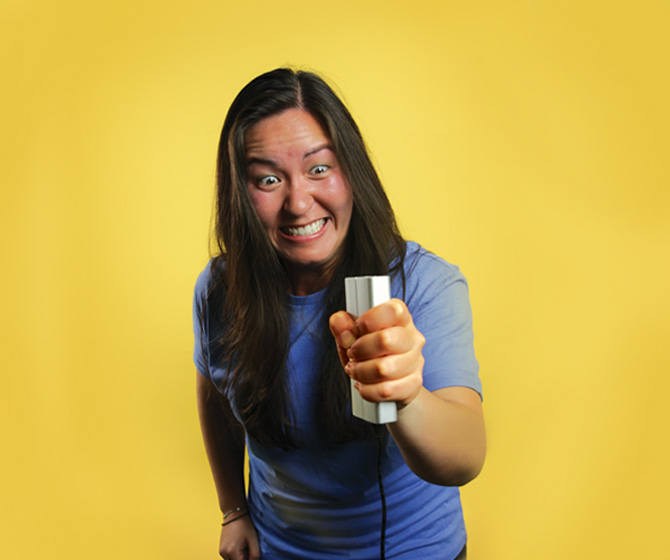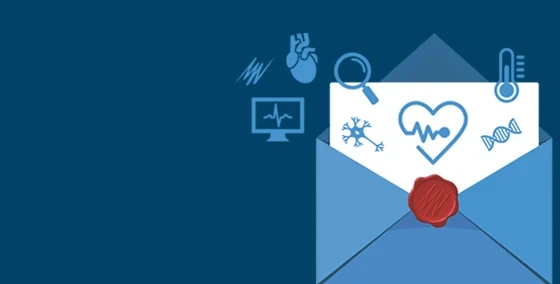Dr. Nandu Goswami
Associate Professor and Head of the Institute of Physiology at the Medical University of Graz.Dr. Nandu Goswami uses ADInstruments teaching hardware and software to engage his physiology students in practical experiments. This gives his students a true-to-life laboratory experience, which in turn, helps them to understand scientific concepts in a meaningful way.
Hi Nandu! How do you use ADInstruments' equipment for teaching physiology?
Engaging students with a real-life laboratory experience
My principle is that science is not all about studying from a textbook. Students should be able to experience what it is like to be in a real research laboratory. That's why I was very receptive to the ADInstruments education tools, especially their PowerLab hardware for teaching, because students use it to record their own biological signals. When they see their own signals it brings the theoretical concepts to life and makes the science more meaningful to each student! They understand the physiological concepts much faster when they can see their own biological signals.
A modern way of teaching
We use PowerLabs combined with ADInstruments teaching software. This is a great combination because it works easily and is a modern way to teach. I can deliver pre-class material to students so that they can prepare for class. We can also grade and test the students using the same system. By using the software to prepare students before class, as well as during classes and labs, it is a much more effective way of teaching. If I was to talk to them from the front of the class alone they could easily miss the information. They certainly would not understand the information in the same way.
Giving students more independence to learn
We are using the ADInstruments teaching software in more and more of our labs – this is something I really advocate for my students. Students find it very exciting to be able to work with more independence; they can prepare in advance and see the possible data they may get before walking into the practical lab. For me personally, I see using an accessible platform to deliver my curriculum as a whole and complete way of learning.
Engage students in active learning
For me, the most important thing is that students are actively engaged in learning. There is no point teaching students in a non-interactive way because half of the students are doing their own thing and not paying attention. During my own Masters in Medical Education, I learned that when students are actively engaged in a hands-on activity in a small group, they learn the best. This is because, even if you have friends and a tutor and teaching resources to help you, at the end of it, the ownership to learn is on you as the student. I think that the students find that particularly exciting.
Giving students a memorable experience
When I went through medical school thirty years ago, the activities that we did with our hands are the ones I still remember to this day. The facts we heard from a lecturer at the front are gone! What stays in my mind are the things we did with our hands. So, even today, I always imagine myself in the role of the student. I think about how I would like to learn, and how much the teaching methods I use will actually help the students to understand a real scientific situation.
Working with the ADInstruments team
I first met the ADInstruments team at a Physiology Society meeting in South Africa, back in 2014. I was really impressed with the work they had been doing in research and education over the years and I was really excited to introduce this to the University of Graz! In that time it has been a great experience working with the ADInstruments team. They provide excellent support to educators and researchers.
I would personally like to thank [co-founder of ADInstruments] Professor Tony Macknight for his vision of making science easier to teach! He is a classical example of how a person from a physiology background can use his life- long experience to create a tool that is very useful to both educators and students. Thank you, Tony for your initiative!
Thanks Nandu!



